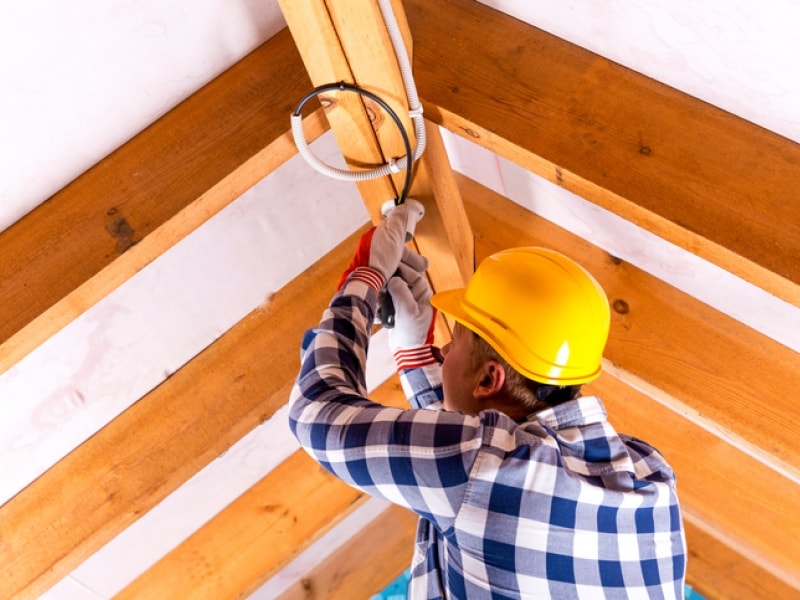
It is very common in the media that, when talking about housing improvements in recent years, always remain with the economic aspect. Real estate investment and price dancing. But this is just one detail of a sector -real estate as well as construction- that has deepened great changes in recent times. Above all, in the last two decades.
Ten years ago, the real estate sector staggered and suffered a crisis that greatly affected Spain. In this decade, however, construction has been able to adapt housing to a time more in keeping with the time in which we live. There is talk of the revaluation of the market, and even of new bubbles, but we cannot ignore the great changes in property in these years.
Energy efficiency, watertightness, efficient ventilation, low-cost air-conditioning and, of course, Nearly Zero Consumption Building. All this in a framework of ecology that has transformed the sector, the heat of the Technical Building Code and its new guidelines. Nowadays it is not enough to build, it has to be done efficiently.
We can talk about two main changes in the way we conceive buildings. The first is this decade that began with the onset of the crisis. In this time, the housing sector has opted for added value in the way we build and in cutting the enormous cost of buildings.
But we cannot ignore the decade before the crisis, in which the construction boom and the very high demand created a new panorama, which was also noted in the transformation of buildings. So, taking into account this new scenario, what improvements in housing have been experienced in the last 20 years?
Main housing improvements in the last two decades
Housing has been transformed for the better in the last two decades, and this is partly due to the slowdown in the sector, which has made it necessary to improve efficiency and offer greater added value.
As an example, in 2008 around 50,000 thousand tons of cement were consumed to supply the brick economy. Today, this figure has stabilised at around 10,000,000 tonnes, which is much more reasonable.
Also these days more houses are sold and more mortgages are offered -from 2015 there are annual increases of up to two digits-, among which are energy mortgages, types of mortgage loans that come out cheaper if you bet on constructions of high energy efficiency.
Because, undoubtedly, the big change has been the commitment to energy efficiency in building. This is partly because consumers have also rethought the role of their homes. Previously, the home was where you lived.
Today, with the increase of time inside interiors, comfort has rebounded. And, in this case, thermal comfort is paramount. Partly because it is what makes us feel better at home, and also because of the benefits it has for our health.
What are the main changes and improvements in housing in these decades?
- The focus is on energy efficiency, rather than on lowering costs. It is no longer enough to achieve the lowest cost, but the sustainability of buildings must be guaranteed. This has been partly due to the concern of governments and, in Spain, to the CTE regulations. Watertightness in buildings has meant that less energy is needed.
- The commitment to indoor sanitation is much greater today. It is no longer enough to have natural ventilation, but new buildings need at least a hybrid ventilation system. In this way, air renewal has prevented moisture or stale air from settling in our homes. These mechanical ventilation systems also help us to improve indoor temperatures.
- New buildings abandon small spaces, tiny elevators and the scarcity of common areas. In fact, many buildings are now opting for owner-occupied spaces that allow them to be less dependent on exteriors. Study areas, playgrounds and even swimming pools are more common in new buildings.
- With a view to energy efficiency and sustainability in construction, buildings have begun to use energy mechanisms and resources from ecological sources, such as rainwater collection for sanitary use or the use of solar energy. And even more advanced means, such as geothermal energy or aerothermal energy.
- Spaces and rooms have gained in optimization, especially in large cities and denser urban centers. This optimisation not only offers more habitable space in the same square metres -obvious to dead zones-, but also improves energy efficiency by abandoning spaces that are difficult to air-condition. In this aspect, it also takes into account more than ever the situation of the building in front of the wind or the sun to improve energy consumption, thanks to the use of natural resources.
- Many of the traditional building materials that were polluting, not very ecological in their extraction or that did not resist the passage of time have been abandoned. The regulations have helped a great deal in this respect, as public policy intervention was necessary.
- Design has become a fundamental part of every home, just as it is of everything around us. What is comfortable or functional is no longer enough, it has to be pleasant so that it can convince buyers.

In all these areas, the most important is the commitment of buildings to energy efficiency. At first glance, the bet for a better design or the increase of common areas and the popularization of other aspects such as domotics may seem the most remarkable. But it is the reduction of energy costs in the building what conditions more to the building of the XXI century.
Energy efficiency in current buildings
Improvements in housing over the last 20 years are primarily notable in the area of energy efficiency and consumption of household supplies. This is partly necessary because energy poverty has become an established reality.
Not only due to the lack of economic resources, but also because of the sharp increase in electricity and gas tariffs, which can cause any unsustainable household to end up in an emergency situation due to high consumption.
It should be remembered that changes in energy efficiency go hand in hand with changes in the health of buildings, and all of them have been promoted in the Technical Building Code through the Basic Document HS3. It brings together the necessary measures of any new building or a reform to adapt to current needs.
What are the main improvements in energy efficiency in buildings?
- The implementation of mechanical ventilation is key both to the health of people indoors and to lower energy costs. Air renewal has to be carried out by means of mechanical systems, which work at all times and eliminate the poor quality air stored in buildings. The air intake can be natural or mechanical.
- The dual-flow mechanical ventilation system is one of the great advances in modern building construction. In this case, all the air renewal, both inlet and exhaust, is done mechanically and automatically. Thanks to sensors and gauges, the system knows when the air has to be renewed, and which inlet and outlet flow rate has to be guaranteed. Moisture, particles and pollution are eliminated to the right extent. Thanks to air filters in the intake channel, the air introduced is of high quality, healthier than that of the street.
- Along with mechanical ventilation is heat recovery, through units that are able to convert cold air from the street to hot, or the other way around. In this way, most of the air conditioning needs are satisfied, reducing to the maximum the use of traditional heating or air conditioning systems.
- The great ally of energy efficiency and mechanical ventilation is the watertightness of buildings. Nowadays, buildings have to be much more airtight, both in doors and windows as well as in walls and ceilings. In this way, the filtration of air from outside is avoided and the ideal indoor temperature is easily maintained. This also makes it more necessary than ever to use a ventilation system to ensure health.
- On the other hand, automatic sensors and gauges have become a common tonic in order to guarantee a comfort that is also sustainable. They range from those who activate air renewal systems by detecting presence to those who are able to know what percentage of humidity there is in a room and act accordingly.
- Just as windows and doors have become much more watertight and airtight, light bulbs and other electrical or lighting equipment also consume much less. Also in the construction it is bet by a better orientation of face to the sun and windows that let pass better the passage of the light and the heat when it is necessary, serving as barrier to the inclemencies in summer and winter.
The importance of energy efficiency is so paramount in current housing improvements that by 2020 all construction on Spanish land will have to be Nearly Zero Consumption Building. A new challenge for the sector that will be of great benefit to the cities and those who inhabit them.
